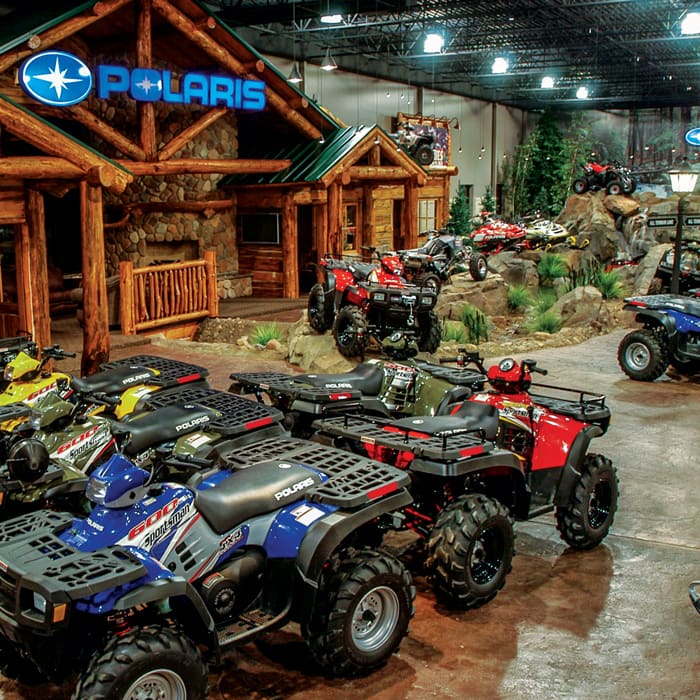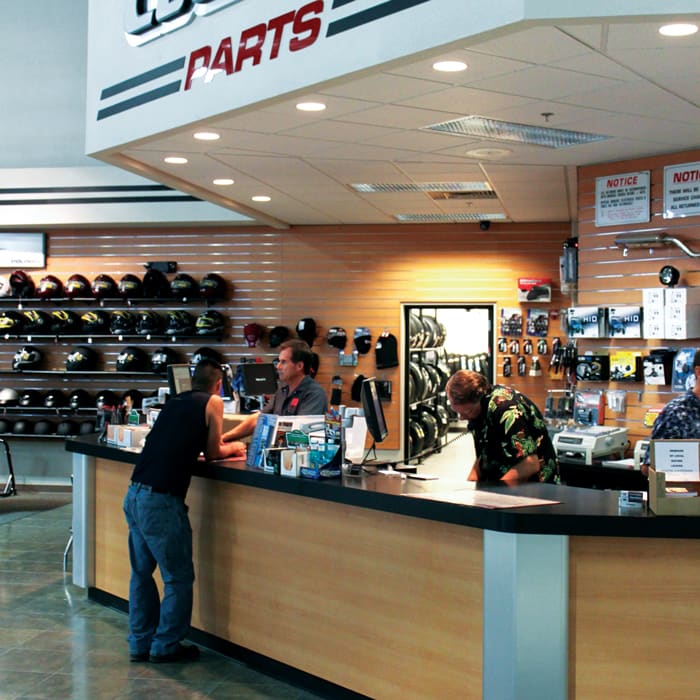Increasing Sales with an Effective Retail Strategy
Retail design expert Paige Wittman shares how your showroom can highlight your professionalism and build customers’ confidence in buying from you.

Tune in to Rural Lifestyle Dealer’s Dealer Success Academy for expanded comments from Paige Wittman, www.DealerSuccessAcademy.
You have 7 seconds to make a first impression. Sounds harsh, doesn’t it? It gets harsher. One study shows that it takes just a tenth of a second to form an impression of a stranger from their face. Regardless of seconds or minutes, you don’t have long to win over the confidence of a customer and your retail showroom plays a critical role in that, says Paige Wittman, co-owner of Miller Wittman Retail Design Group.
An attractive and functional retail design can make you more money. “Regardless of your budget or where you currently are in your retail space, a good retail design will increase your sales and increase your profit margins. When we’ve done major remodels or major expansions with dealers, we’ve seen wholegoods sales increase by 40% when you track sales for a year after the remodel. We’ve seen parts and accessories sales go up in excess of 50%” Wittman says.
Demanding Asset
Your retail environment is an asset that must be carefully and continually monitored. “It’s very demanding to maintain a retail store. There's constantly something going on that is working against you in your store,” Wittman says. That could be bad weather that leads to slick, messy floors or damage done to walls and counters from moving inventory, along with the impact from people just working in the space.
Dealer Takeaways
- A retail showroom that is dirty, disorganized and cluttered erodes at your professionalism.
- Every dealership should have a retail plan, regardless of how much budget that can be allocated or the space available for retail.
- Simple maintenance tasks, such as adding or improving lighting, cleaning floors, or painting walls can have a big impact.
- Design your parking lot, outdoor showroom and indoor showroom so that a customer has a clear path and is guided through the store.
Each dealer’s store also comes with its own unique challenges, including working in older stores or facilities that have been converted into a dealership. “When a customer comes in, they expect you to look the part. They want you to be a source of new information. They want you to understand the features and benefits of the products that you're selling. They expect there to be a certain level of expertise that comes from your store. So, if you don't have a plan, your store can become dated or cluttered,” Wittman says.
Examining the Exterior
Wittman advises starting from the outside and working in when evaluating your retail environment. For instance, ask yourself these questions about your signage:
- Are the signs in good working condition, with all the lights working and operating at the same rate of light?
- Does your signage look permanent or temporary?
- Are you displaying current logos for the brands you carry and are you meeting brand standards?
- Are you maximizing what your city allows regarding signage?
She says a channel letter sign is a good way to maximize square footage because the size of the letters is counted as opposed to the diameter of any box around them.
“A good retail design will increase your sales and increase your profit margins …” — Paige Wittman of Miller Wittman Retail Design Group
Next, look at the condition and flow of your parking lot. Many parking lots also double as an outside display as well as loading and unloading zones. Make sure your customers have clear and easy access to the parking areas and front door.
Regularly change up the outside inventory to create ongoing interest from visitors as well as those that drive by. A good practice is to have several models equipped with attachments and to display from smallest to largest and be careful about how you displaying big equipment. “If you have a large tractor in front of your door, no one can see anything behind it and they have nothing to look forward to,” she says.

Clawson’s Motorsport of Fresno, Calif. highlights the beginnings of the family business as a gas station, conveying the message that the dealership has longevity in the community. photos courtesy of Miller Wittman Retail Design Group
And, make sure that your front door is clean of outdated or unnecessary stickers or fliers.
Examining the Interior
Continue evaluating by looking at the interior shell, which includes the walls, floors, ceiling and lighting. “Everything you sell can be hard on the floors and walls, so the first thing to do is clean, patch and paint the walls. It is inexpensive to do and it ties the space together,” Wittman says.
She advises against paint colors that are too bright or walls of different colors. You want your customer’s attention on what you sell, not your walls.
Lighting is another key component. Flickering, burned out or mismatched bulbs detract from your image and can be easily fixed. Adding spot lighting could help with dark corners or as a way to show off new inventory or special promotions. Customers may avoid areas they are dark and dingy and dark corners end up being areas cluttered with items that shouldn’t be in the showroom, such as boxes or supplies.

The showroom of Mies Outland of Watkins, Minn., leads customers through an outdoors-themed display of equipment, elevating models they want to promote. photo courtesy of Miller Wittman Retail Design Group.
Look down at the floor and up at the ceiling. Polished concrete is acceptable for dealerships. If you have vinyl or tile, make sure to replace any cracked or chipped areas. Think about warming up some areas with carpeting, like sales desks, where customers may be sitting and talking. “You don’t want damaged flooring to evoke a feeling that you’re not successful,” Wittman says.
Wittman says some retail spaces have exposed beams or pipes that have been painted gold or other colors as an accent, but those colors tend to show off dust. She suggests instead to use a technique called clouding, mixing two parts black paint with one part white paint to make dust less visible.
Clearing a Path
Ultimately, the goal of your retail space is to make it easy for customers to find what they want and discover new items. Organize clear paths to your parts and service counters. Make sure your seasonal displays are current and re-organize displays daily. Consider highlighting equipment by elevating it.

Find a balance at your parts counter between showing off supplies and collateral, while still allowing for ample work space. Here’s how one dealership set up its parts area. photo courtesy of Miller Wittman Retail Design Group.
“You’re defining a process and telling customers where you want them to be. Customers typically make a beeline to your parts and service departments, so add eye-catching displays on the way,” Wittman says.
Showing Your Strengths
Look for ways to add in elements from your unique brand. For instance, Miller Wittman Retail Design Group helped Clawson’s Motorsports highlight its family history and the start of the family business as a gas station by displaying vintage gas station equipment.
“It was important to them to show the family history, but it also evokes permanence in the community,” Wittman says.
Another client shows off their clean and well-organized service department through a window from the retail space. “Don't underestimate what it can mean for your consumers to see your shop and understand how you would treat their products,” Wittman says.
Get Started
You may not be able to take on a remodeling project right now, but you can do a thorough clean-up to get started on a new look. Wittman says to watch out for the “messy desk syndrome” that erodes confidence in your professionalism. Free the parts counter of anything that is not needed regularly, like older catalogs, product information, etc. Clearing out some of those things provides more work space and you should plan for at least 5 feet per person. And, keep from view anything that is distracting from your business, such as take-out drink cups, personal phones, etc.
“You have to be constantly thinking about your featured areas. Just for a minute, pretend like every day is your first day in the dealership,” Wittman says.
An experience that’s less than what it should be can have a big impact, “It all adds up to a customer thinking that maybe you’re not doing as well as you could be and maybe you won’t treat them well either,” Wittman says.
Click here to read the full article and other Dealer Success Academy seminars at Rural Lifestyle Dealer